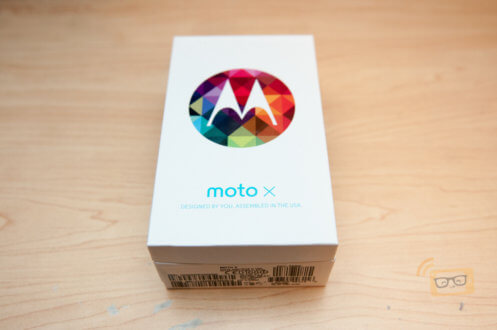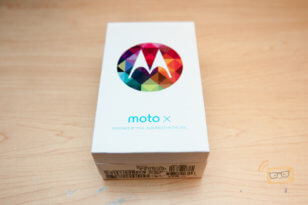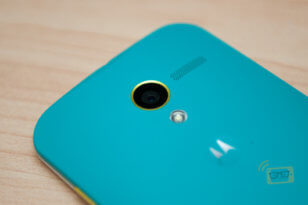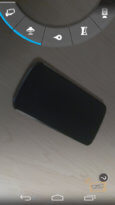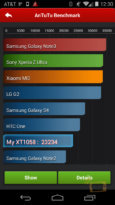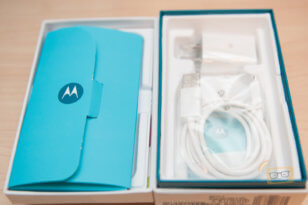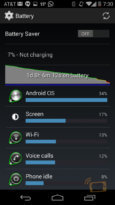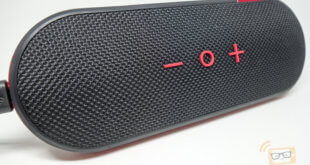The Motorola Moto X. The Motorola flagship device that is more about software than it is hardware. Designed and built to reinvigorate the Motorola brand, it’s also bringing to bear the fruits of the company’s relationship with Google, which now owns Motorola Mobility outright. Sporting a clean(ish) latest version of Android 4.4 and Google Now-powered touch-free voice control, it seems as much a Google device as a Motorola one.
Let’s take a look at the specs:-
- Processor: Qualcomm Snapdragon S4 Pro dual-core 1.7 GHz processor (with Motorola’s X8 Mobile Computing System)
- Display: 4.7″ AMOLED display, 720p, 316 PPI
- Memory: 2 GB of RAM
- Storage: 16 GB / 32 GB
- Camera: 10 MP ClearPixel Camera (Back), 2 MP camera (front)
- Battery: 2,200 mAh battery
- OS: Android 4.2.2, 4.3, 4.4
Review
Hardware
Design & Build Quality
Two pieces of plastic, conjoined together, with lots of textures all around. That’s what the Moto X is and feels like.

The Moto X is a device in which users can customize it to their preferences. Users can specifically select a storage size (16 GB or 32 GB), choose from 18 colored backs like teal and yellow, and then pick one of seven accent colors for the buttons, camera lens ring, and so forth, all through Motorola’s Moto Maker website.

That aside, the Moto X has really nice soft curves around the device. On the back of the device, the middle is a little thicker so it sits around the hand really well. Motorola has taken advantage of this and made a specifically shaped battery to fit within this curve, which by the way isn’t removable.

The Gorilla Glass-fronted screen runs almost edge-to-edge, making the Moto X smaller than other 4.7″ devices such as the Google LG Nexus 4.

The device has a maximum thickness of 10.4 mm but at the edges of the device, it’s only 5.6 mm. The Moto X also weighs about 130 grams, which makes the Moto X a fairly light device.
Display
We’ve never really liked the AMOLED displays, which are on most Motorola and Samsung devices. But we were quite surprised by how much we actually like the display on the Moto X.

There are probably several reasons why Motorola chose a 720p AMOLED display. One is the fact that AMOLED displays light up individual pixels on the display instead of the entire thing, which is great for Active Display. Another reason is probably the battery life. Battery life is probably much better on a 720p display versus a 1080p display. Besides, at 4.7″, 720p isn’t that much of a difference from 1080p since 720p is still over 300 pixels per inch, which is supposedly more than the human eye can distinguish.
Performance
Benchmarking with AnTuTu, the device scored a rating of just over 23,000, making it comparable in processing and graphics power to the Google LG Nexus 4. We were actually quite surprised at how well it did. Especially since it’s running a Snapdragon S4 Pro dual-core with only 2GB of RAM.

The interface was very smooth, and we didn’t notice any performance lag. Motorola really did a great job here, optimizing the Snapdragon S4 Pro with their X8 Computing System.
Battery Life
So far, we’re impressed with the battery life on the Moto X. We managed to get more than 24 hours of mixed usage out of the Moto X, which includes mixed network usage (part 4G, part Wi-Fi).
Overall, we’re quite impressed with the battery life considering it’s only 100mAh bigger than the Google LG Nexus 4.
Camera
The camera on the Moto X isn’t as bad as everyone thinks. Now, that being said, it isn’t the best camera out there either. The camera performance is pretty decent compared to some of its rivals, especially in low-light conditions, due to the larger pixels in the sensor.
The overall UI of the camera app is pretty nice and minimal. There’s no dedicated hardware or software button for the shutter. Simply tap anywhere on the screen to capture a photo. A long-press will turn on the burst mode. Swiping from the left gets to the settings, swiping from the right brings up the gallery.

The addition of a slow-motion video mode is fun. The images won’t knock you down with clarity or contrast. They’re just good. There’s also a 2MP front-facing camera, which is able to capture 1080p video.
One pretty neat feature on the Moto X is the Quick Capture gesture. Two quick flick-of-the-wrist immediately wakes up the device and brings up the camera in about two seconds. It’s awesome – we used this feature to death and loved it every time.
Audio & Call Quality
The Moto X rear mono speaker is louder and fuller than average, and though it can’t rival HTC’s stereo Boom Sound speakers, it sounds better than many devices on the market.

As we’ve come to expect from a Motorola device, the reception is good and call quality is excellent. Incoming and outgoing voice were loud and clear. The Moto X worked well with our car’s built-in Bluetooth too.
Software
The Moto X is one of the only devices sold on contract that is almost stock Android, aside from Motorola adding a few features to it. We know some people favor TouchWiz over stock, or Sense over stock, but we feel that this is how Android devices should be, being as close to stock as possible.
Touchless Control
The biggest feature on the Moto X is the “Touchless Control”, which enables users to perform certain tasks via voice alone using the key phrase “OK Google Now”. This allows users to set reminders, perform Google searches or even send texts without ever touching a button. Even while the device is asleep! It’s incredibly useful for drivers and a fun element to explore in different situations.

However, it is worth mentioning that if you have your device locked (password-protected, etc), the device can’t perform tasks until the device is unlocked. A bummer, but it’s understandable.
Active Display
“Active Notifications” is another major tweak designed to notify users on incoming notifications. Rather than fully powering up the screen in response to every notifications or time-check by users, the service makes clever use of the device’s accelerometer to intuitively flash a clock and a series of notification icons in the center of screen when the device is flipped or removed from a pocket.

Holding on the notifications icon also reveals a “peek” at the highest priority alert, which a user can then easily go to with a slide. The entire process draws far less power, largely thanks to the fact that the AMOLED display only draws power to light the notifications area of the screen.
Motorola Assist
Final Thoughts
The Moto X is one of our most favorite devices of the year. Sure, it doesn’t have a Snapdragon 800, or 3GB of RAM, or a 1080p display. But being able to customize the device to user’s preference is a big plus, especially for the average consumers out there.
We’ve been using the Moto X for a little over two week and we have yet to experience any lag at all. As far as battery life goes, it’s great. We’ve been averaging around 22 hours with about 4 hours on screen time on Wi-Fi and about 17 hours with 3 hours on screen time on 4G/LTE. Which in our opinion, is not bad at all. Many phones can’t last half that long, even with the same size battery.
 Pocket Insider Latest Technology Review
Pocket Insider Latest Technology Review
